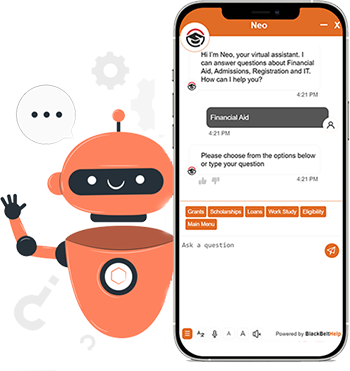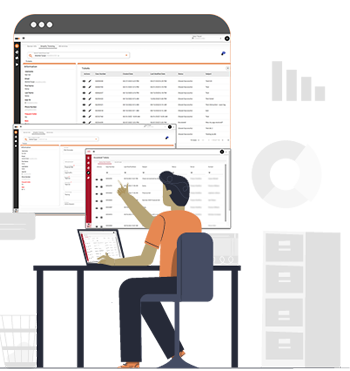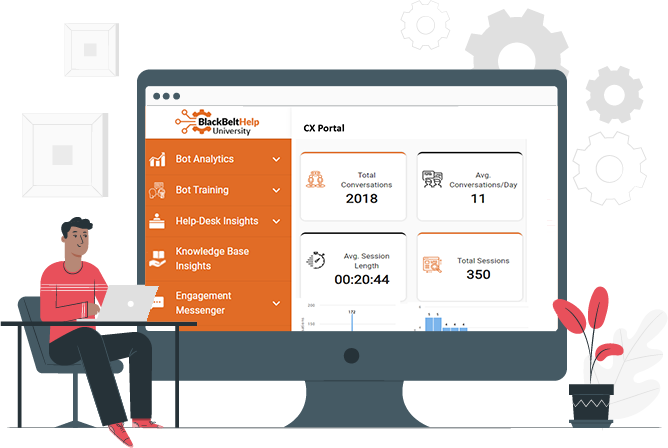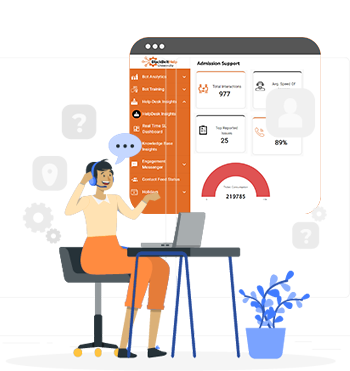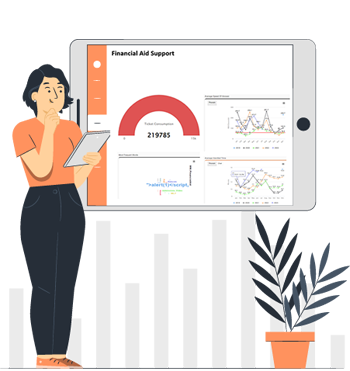5 Challenges OneStop Student Services Help You Resolve
Higher education today is experiencing a groundbreaking shift towards student-centric processes. Driven by changing student demographics and rising student expectations, all the emphasis today is on personalization, customization and simplifying the student journey. The growing inclination towards OneStop student services is an important marker of this trend.
OneStop student services not only centralize all the support systems, software, and services but also help the user institutions cut their helpdesk costs. Additionally, they play an instrumental role in helping these institutions address all their support challenges effortlessly.
5 Challenges OneStop Student Services Can Help You Resolve:
Student Runaround
While the intention has been to simplify the student journey and increase student ease, the number of offices and processes that have cropped up to do so have further complicated it. And it is not easy for a student to navigate through this muddle of processes without help. A student today must visit many offices for various purposes and experiences a lot of confusion because of that. The result is a lot of student runaround, both physical, and virtual.
With one-stop support, your students do not have to run from one office to another as they experience centralized services. Additionally, by providing all the services at a single location, physical or online, one stop decreases the number of students dissatisfied with waiting in long lines for service. For example, where earlier a student needed to visit three different offices to inquire about financial aid status, switchboard & facilities issues, and a dysfunctional laptop, now he/she must visit only one. Easy, no?
Decreasing Enrollment and Retention
Do you know 1 out of 3 first-year students does not advance to sophomore year? And do you also know that the cost to recruit a new student is approx. 5x of that needed to retain a current student? Now think of the money an institution can save in revenue if it is able to retain all the enrolled students! A lot, right?
Many physical, and virtual one stops like BlackBeltHelp’s, employ various state-of-the-art technologies like predictive analytics and AI to identify patterns from the multitude of institutional data. This data, in turn, is used by the user institutions to make smarter decisions. For example, Analytics, a part of BlackBeltHelp OneStop can identify at-risk students and enable faculty to drive prompt interventions to guide these students towards graduation which means increased student engagement and retention rates.
Rising Support Costs
Rising support costs and declining support budgets are two major challenges higher education is facing today. Virtual one-stop support like BlackBeltHelp’s can help a great deal in this regard. The technologies like artificial intelligence, analytics that it comes with might look expensive to adopt but are far more economical than the alternatives.
Moreover, one-stop support centers whether virtual or physical, have cross-trained staff, adept at handling all sorts of student support issues which means the user institution doesn’t have to hire people for different service offices. Cost-effective, no?
Increased Service Wait-times
Because of the rising support costs and declining budgets, higher education institutions today try to achieve more with a limited number of resources. It results in overburdened support staff and increased service wait-times for your end-users.
With virtual one-stop centers, institutions can overcome these challenges easily. The entire process of doing so is threefold. First, OneStop student support centers use self-service technology which empowers your end-users to self-help, reducing the need for getting external assistance. Then, there’s 24×7 support with centralized services which means no backlogs and no delayed services. Lastly, one-stop centers employ ultramodern technology which means your end-users would not need human intervention for every teeny tiny issue.
Unavailability of 24×7 Support
If you look at the statistics, today’s typical student is no longer an 18-year old studying full-time on campus. They are parents, individuals working full time, or part-time jobs. Due to there being a disparity in the services that an institution aspires to provide and actually delivers, a major chunk of these students drops out of college. Which is why institutions today need one-stop student services to address their issues 24×7.
OneStop student services wield multi-channel, personalized support round-the-clock. Additionally, they bring your students from lines to online (in the case of virtual support centers). Overall, centralized student services make all departments work in synchronization and help your support staff assist both traditional and non-traditional students better.
Conclusion
20 million American students are enrolled in colleges today! Striking, right? What is more striking is that less than fifty percent of students complete their degrees within six years. While the causes might be manifold, personalized student support can help a great deal in guiding many them towards graduation.
Moreover, amidst the increasing student expectations and changing student demographics, it only makes sense to make all the support processes more inclined towards helping students, don’t you think?

